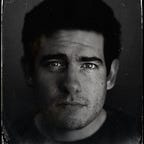A Year With the Fujifilm x100v and Why I Let Her Go
All images were made with the Fujifilm x100v during the past 12 months. Everything was shot in standard jpeg and edited in Lightroom with various homemade film simulations.
The Fujifilm x100v is the ultimate Swiss army knife, ‘take everywhere’ camera. In many ways, its the most versatile little photo machine that I’ve ever shot, and I’ve shot just about everything: from Mu43 to APS-C, to full frame, 35mm film, and 120mm — the x100v is what I wish I’ve had the past ten years for all my travels and everyday documentation, yet, I let her go.
Image quality
Let’s talk IQ. Fujifilm offers phenomenal 23mm lenses for its interchangeable cameras: the 23mm f/2 WR and the larger 23mm f/1.4. I’ve shot both and find they’re fantastic in their own right. As a huge x100 fan, I’ll be the first to admit that the lens on the pre-V models were not very good, and I was never interested in upgrading unless Fujifilm updated the lens. They finally did so with the x100v, and boy is it incredible. The 23mm f/1.4 was my main workhorse for a long time, but I prefer the look of the fixed 23mm f/2 from the V when combined with its X-Trans 4 sensor: It’s modern but has character, rather than just being clinically sharp — Exactly what I like.
User experience
I have a giant bear claw of a hand, so I added a leather case with grip support and a thumb rest to the camera. This setup is comfortable and allows me to shoot all day without getting sore hands. The buttons and dials feel somewhat minuscule but very solid. The layout has the right features for an efficient workflow but is not cumbersome with clutter and unnecessary buttons. Besides the tiny crack I made on the screen, it gave me complete confidence to use and abuse it, as I have with the original x100. Because of its small and lightweight size, I could easily carry it around my shoulder for 10+ hours without being bothered. However, this is where the ethos of the camera became problematic for me.
It’s big enough that I carry it on a strap, which can sometimes beat the purpose of a small, compact camera. It’s a tool that hangs around my shoulder, and there is not much of a difference between the x100v and many of the other Fujifilm bodies with a prime — it’s still a camera that hangs on my shoulder. There have been times when I have been shooting a whole day, and by evening, I get tired of photography, but I still long for a tiny point-and-shoot that could sit in my pocket for those casual moments. The size of the x100/s/t/f/v has always been a hate/love thing for me.
In a perfect world, I would want everything under the hood of the V but in an x70 body with an external viewfinder. That would be the ideal user experience, and I guarantee there would be a massive market if Fujifilm tapped more into the point-and-shoot world.
It’s practically the perfect camera, but it’s not for me.
Over the summer, I went on an epic road trip where hiking and landscape photography was my main goal. I packet my primary body, the X-T3, with a couple of primes and a small Mu43 point-and-shoot that lived in the car for everyday snapshots. The little Mu43 GX85* has IBIS for when I occasionally wanted to record 4K, and should someone break into the vehicle (speaking from experience), it wouldn’t be the end of the world as the GX85 costs a fraction compared to the x100v. With no regrets, I left my ‘perfect camera’ at home, and that’s when I realized that it’s too good and too expensive of a camera to simply sit in a drawer.
*Full disclosure I have also sold the GX85.
Conclusion
A decade ago, when I lived out of a backpack for weeks at a time, the original x100 was all I needed. It was the imperfect Swiss army knife that I made do with whether I found myself in the jungle, the streets or a tropical storm. There was no better tool to teach me photography than the limitations of the old x100. But the reality is that I have grown, and I can now prioritize having specialized tools.
I suppose the x100 series represents a time in my life of adventure when I had to make do with what I had available. Fast forward to today, and the x100v is what I have always dreamed of in many ways. But in the years of dreaming, I have concluded that my priorities have shifted, and I am no longer interested in reliving my previous life of just me and the little Fuji-San taking on the world. Perhaps that is the true beauty of the x100 series: it is a camera that helps us rediscover ourselves and our visual voice.
